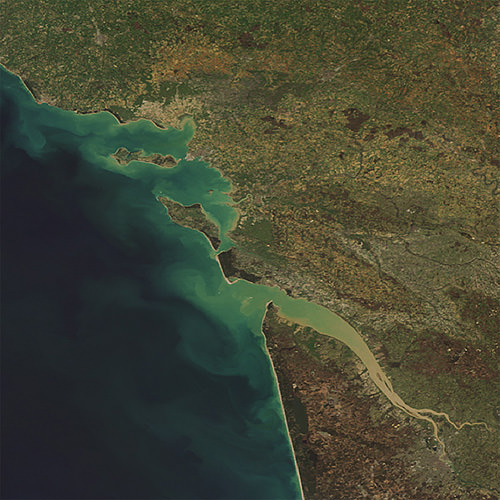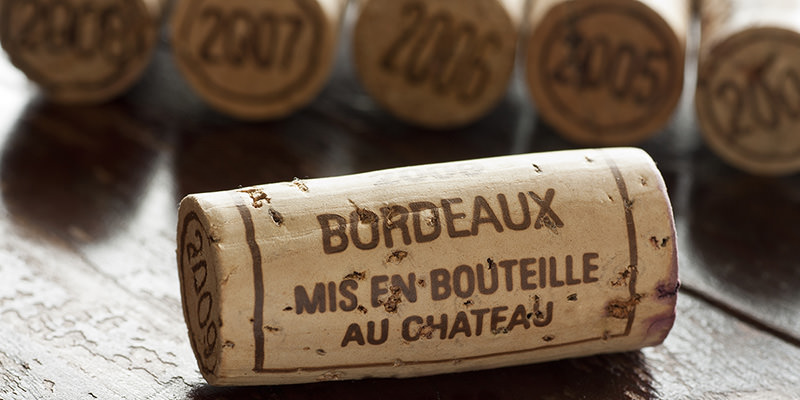Someone brings some good Bordeaux to a party. Great. Someone opens said bottle. Even better. Someone starts talking about the differences between the Left Bank and the Right Bank in the Bordeaux region. Reasonably, you grab your glass — after it’s been filled — and jet to the other side of the room.
Bordeaux can be intimidating, in everything from label to that crazy silent “x” to the sometimes insane price tag. But the Left and Right Banks don’t need to be a part of what terrifies us about one of the most famous Old World wine regions. They’re actually (and we’re expecting a lot of hate mail for saying this) pretty simple.
Let’s start with what they are, since maybe you had no idea the Bordeaux region was divided into Left and Right banks, and that said banks have nothing to do with cash withdrawals or ridiculous ATM fees. The “banks” we’re referring to here are river banks, land masses on either side of the Gironde Estuary (and “estuary” is just a fancy way of saying the place where a river meets the sea and they get all flirty and mixed up). A visual might be more helpful. If you look at a map of southwestern France, you can see what looks like an upside-down Y (or Flux Capacitor, depending on your preference) slicing into Bordeaux territory. That is the Gironde Estuary, which is fed by two rivers — the prongs of the Flux Capacitor — called the Dordogne and the Garonne. On the southwest side of the Gironde is the Left Bank; on the northeast side, the Right Bank, the two major areas where all Bordeaux wine is produced. Easy, right?

It actually gets even easier once we get into terroir. See, even though they’re part of the same winemaking region, the Left and Right banks of Bordeaux have significantly different terroirs, courtesy of that great big Gironde. On the left side the soil is rockier, packed with gravel and deep deposits of limestone. If you remember your winemaking 101 (they taught that in every junior high school, right?), you’ll know that bad soil doesn’t necessarily mean bad wine. In fact, the more the vine has to struggle for nutrients, the more character — and potential quality — it develops. This is why Bordeaux wines of the Left Bank are considered prime candidates for aging, while Right Bank Bordeaux are generally thought to be smoother, drink-me-soon-style wines.
Not that wines of the Right Bank are uncomplicated. The soil of the Right Bank is less “difficult” than that of the left Bank, with limestone closer to the top and less gravel to struggle through generally. The wines of the Right Bank don’t lack character. It’s just a different kind of character.
Which brings us to the grapes. Don’t run away, it’s all still fairly simple. Because of those differences in terroir, Left and Right Bank Bordeaux tend to showcase two different grapes: Left Bank wines are mostly Cabernet Sauvignon fleshed out with Merlot; Right Bank wines are more Merlot balanced by a smaller proportion of Cabernet. The Cabernet-driven Left Bank wines tend to be higher in tannin — again, making them good candidates for aging, which helps to mellow out the tannins and integrate the flavors of the wine. Merlot-driven Right Bank wines are generally smoother, with softer fruit flavors and balancing, but not dominating, tannins. Pretty simple, if not all-encompassing, distinctions. (There are always slightly confusing exceptions in wine, which is part of the reason we need another glass.)
So what about the chateaux themselves? You know, those beautiful but intimidatingly grand castle-looking buildings on Bordeaux labels? Well, they’re real, but again, different on the Left and Right Banks. On the Left Bank, Chateaux actually tend to look like little castles, minus the princess. Right Bank chateaux aren’t necessarily less grand, they just sit on smaller plots of land. Think 30 hectares tops, compared with 5o- to 80- hectare vineyards on the Left Bank. In fact, the incredibly famous and incredibly expensive Right Bank wine Le Pin began as a one-hectare vineyard in 1979 (it’s since grown to a whopping 2.7 hectares).
Last but not least: big names to know (how else are you going to know which bottle to hog at the dinner party). Big Left Bank players include names like Chateaux Margaux, Lafite, and Mouton Rothschild. Right Bank Bordeaux has fewer heavy hitters, though the heavy hitters hit, well, heavily — wines such as Petrus, which is actually the most expensive wine in all of Bordeaux, and Cheval Blanc.
It’s simple but a lot to remember. Fortunately, we’ve diluted it all down into a 45-second video, something you can watch in the elevator up to the dinner party. You know, the party you’re about to dazzle with your Bordeaux “Bank” wine savvy.

